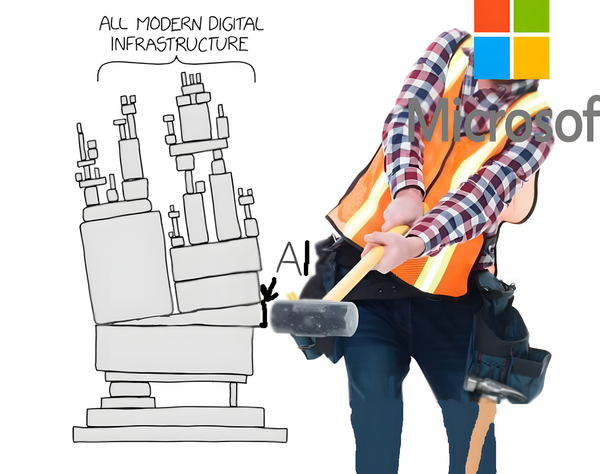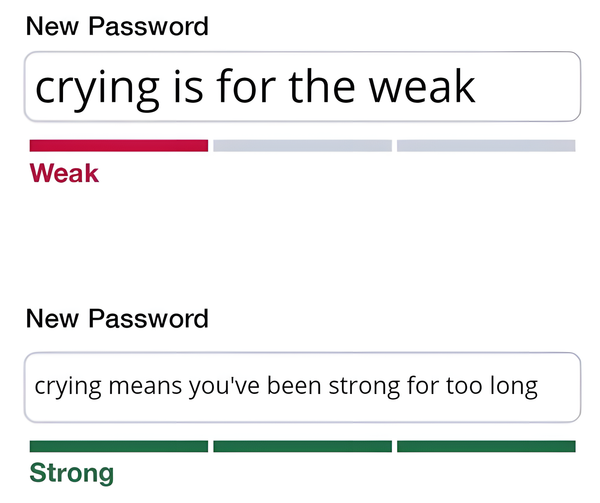A Heart-to-Heart on Engineering Leadership
Debunking the “deadwood” myth

Ever felt like you're constantly racing against time, juggling projects, deadlines, and trying to keep your team on track? I know I have. But here’s the thing – while we're busy solving complex technical puzzles, we might be missing out on something crucial. Something that's not in the code or the schematics, but in the very heart of our teams.
Have you ever found yourself in a team meeting, looking around the table, and quietly labeling one or two team members as “deadwood”? I'll admit, I've been there. It's an easy trap to fall into, isn't it? We see someone not hitting their targets or struggling to keep up, and it's tempting to think, “Well, they're just not cut out for this.”
But here’s a thought that changed my perspective – what if we, as leaders, are part of the reason they’re not thriving? It’s a tough pill to swallow, but it’s an essential one. I’ve seen many of us, myself included, too quick to pin the blame on individuals, labeling them as the problem, without pausing to consider the bigger picture.
The truth is, labeling someone as “deadwood” is often a knee-jerk reaction to deeper issues within our team dynamics or organizational culture. It’s like looking at a wilting plant and blaming the plant, without considering that maybe it’s not getting enough sunlight or water.
So, in this newsletter, I want to challenge us to think differently. Let’s explore how we might be unintentionally contributing to this issue and, more importantly, how we can turn things around. It’s not just about salvaging a team member; it’s about being the kind of leader who nurtures an environment where everyone has the chance to flourish.
The Myth of “Deadwood” – Reassessing Employee Performance
Let's talk about this “deadwood” concept a bit more. You know, the idea that some team members just don't have what it takes. I've been thinking a lot about this. In my early days as a leader, I remember looking at performance charts and feeling frustrated with those consistently at the bottom. “They just don't get it,” I'd think. But over time, I started asking a different question: What if it's not just about them?
Here's a perspective shift: What if those struggling team members are actually canaries in the coal mine, signaling issues we might be missing? It could be anything – unclear goals, lack of support, or maybe they’re just in the wrong role. As leaders, it’s on us to dig deeper and understand the root causes. It’s not about making excuses for poor performance, but about being fair and thorough in our assessment.
Now, let's turn the lens on ourselves. As leaders, our actions, words, and even what we don't say, set the tone for the team. I learned this the hard way. There was a time when I prioritized deadlines over everything else, and it showed. My team was delivering, sure, but at what cost? The atmosphere was tense, collaboration was minimal, and creativity? Well, that was out the window.
I realized that I was part of the problem. My focus on results was creating an environment where people were afraid to fail or speak up. It wasn't intentional, but the impact was real. So, I started making changes – more open conversations, recognizing efforts, not just successes, and showing that it’s okay to take risks and make mistakes. The transformation wasn’t overnight, but it was profound.
🐘 Next, we'll dive into identifying the hidden challenges in our teams and organizations – those elephants in the room that we sometimes choose to ignore.
The Elephants in the Engineering Room — From Toxic Leadership to Siloed Structures
So, we've talked about reevaluating how we see our team members and our own roles as leaders. But there's more to it. In our engineering worlds, there are often big, glaring issues – I like to call them the 'elephants in the room' – that we somehow manage to step around rather than confront.
One such elephant is toxic leadership. It's a tough term, but let's face it, it exists. Leaders who are more focused on their own agendas than the wellbeing of their teams can create a ripple effect of negativity. I've seen it too many times – environments where fear, not inspiration, drives the work. It’s suffocating innovation and team spirit.
Another often-ignored issue is the siloed organizational structure. Ever been in a situation where one team has no clue what the other is doing? It’s like having a group of skilled musicians playing different tunes – it just doesn’t work. Collaboration and communication are key in product development (well, in most groups, in general), and when they're missing, projects suffer, and so do people.
Let me share a quick story. I once worked with a team that was struggling with delivering a project on time. The initial reaction was to blame the team's work ethic. But when we dug deeper, we found the real culprit: an incoherent strategy and a lack of clear communication from the top. Once we addressed these issues, the change was like night and day. Was it easy to change? Hell no. Was it worth the effort? Hell yeah.
🧩 Siloed Teams: The Isolation Problem
Have you ever worked in a team where it felt like you were on an island, disconnected from the rest of the organization? Siloed teams are like isolated puzzle pieces. Individually, they might look fine, but they don't quite fit into the bigger picture. This lack of integration leads to a host of issues – duplicated efforts, inconsistent goals, and a fragmented culture. The key is to encourage cross-team collaborations and regular knowledge sharing sessions, breaking down these invisible walls.
🤹 High Work-in-Progress: The Juggling Act
In our field, having multiple projects on the go is common. But there's a fine line between multitasking and overloading. High work-in-progress often leads to burnout, reduced quality, and delayed deliveries. It’s like spinning too many plates – eventually, something's going to drop. Prioritizing tasks and focusing on completing one project before jumping to the next can significantly improve both efficiency and team morale.
📈 Individual Incentives: Missing the Team Spirit
Individual incentives, while great for personal motivation, can sometimes overshadow team or organizational goals. It’s like rewarding a single player for their performance in a team sport – it doesn’t always lead to a win. Shifting the focus to team-based rewards can foster a more collaborative and unified work environment, where the success of one is celebrated as the success of all. The same is true on all organizational levels — your team is part of something bigger. Your tribe, too. Your domain as well. If you don’t understand what the whole org is pushing for, misalignment is the daily reality.
🏆 Toxic Reward Structures: The Unintended Messages
Reward structures in our teams can sometimes send the wrong message, valuing short-term outcomes over ethics or sustainable practices. For instance, rewarding only the end results without considering how they were achieved can lead to cut corners or unethical/unsustainable practices. It's crucial to develop a reward system that acknowledges not just what is achieved, but also how it is achieved.
⏱️ Overtime Work Culture: The Cost of 'Hustle'
The glorification of overtime and 'hustle culture' can be detrimental. Sure, it might seem productive in the short term, but it's unsustainable. It leads to burnout, decreased job satisfaction, and can even stifle creativity. Encouraging a healthy work-life balance is not just good for our teams’ well-being; it’s good for long-term productivity.
🌱 Stagnant Career Growth: The Motivation Killer
When team members feel stuck in their roles with no room for growth, it's a recipe for demotivation. Continuous learning and growth opportunities are not just perks; they're necessities in our fast-evolving field. Implementing mentorship programs, ongoing training, and clear paths for advancement can reinvigorate a team’s enthusiasm and commitment.
✨ Demotivating Environment: When the Spark Fades
Finally, a demotivating environment – it’s the subtle, pervasive sense that our work doesn’t matter. It can stem from a lack of recognition, poor communication, or even a mismatch between personal and organizational values. To combat this, we need to create environments where feedback is constructive, achievements are celebrated, and everyone feels valued and aligned with the company's mission.
As we wrap up this heart-to-heart, there's one powerful truth we need to hold on to: “Stop blaming your people, and realize that their performance is a product of the environment you’ve created. To improve the results, improve the environment.” This statement has been a game-changer for me, and I hope it resonates with you too.
Our journey as engineering leaders is not just about meeting deadlines, pushing boundaries, or innovating the next big thing. It's about the people we lead and the culture we cultivate. The strategies we discussed – from fostering empathetic leadership to encouraging continuous learning – are all pieces of a larger puzzle. The puzzle of creating an environment where our teams can truly excel.
Remember, every step we take to improve our leadership and our team's environment is a step towards better performance, higher morale, and ultimately, greater success. It's about making a conscious choice every day to be the kind of leader who not only builds projects but also nurtures people.
A parting thought
I bet some of you still think: “yeah, good points mate, but as a matter of fact, I could still give you a couple of names of deadwood from my org” — I believe you.
Take a good look in the mirror, and think about who hired them. Who failed to upskill them? (I know, I know, it was the dilettante leader before you…). Before blindly firing and re-hiring, consider how to fix a system that produces such people.



